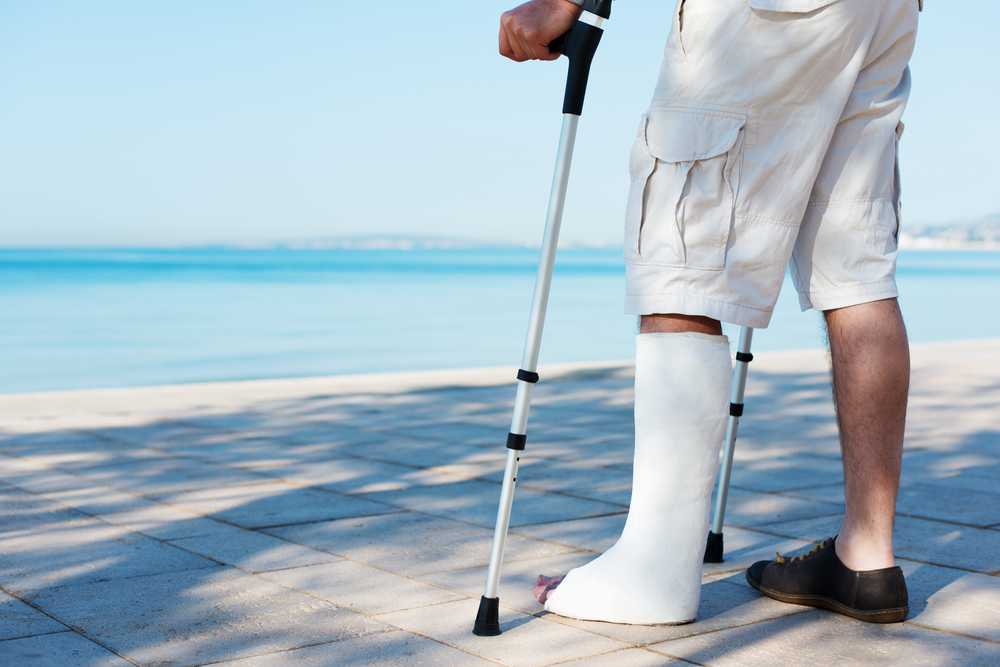
Steadying your foot or leg with a cast can significantly limit your ability to move.
However, even if a fracture and a severe sprain require forced immobilization of the foot, you don’t always have to stop moving completely.
Here are some tips to help you keep going despite having your foot in a cast.
The most important thing is to keep active
Keeping your leg or foot in a static position can have dire consequences on your mood and overall health.
Therefore, we recommend you avoid a sedentary lifestyle during the healing period.
In the short term, the lack of regular physical activity can result in:
- Mood swings;
- Joint discomfort due to muscle compensation;
- Slight weight gain;
- Anxiety or depression;
- Sleep disturbances;
- A decrease in energy.
In the long term, immobilization can lead to:
- Venous thrombosis;
- Atrophy of the foot or toes;
- A decrease in the muscular strength of the foot;
- Significant weight gain;
- Stiffening of the arch of the foot and toes;
- Loss of muscle volume;
- Decrease in bone density.
While a training program will help you heal better, you should make sure to avoid inadvertently aggravating the injury.
Choose a fitting sport
There are several variables to consider when choosing a sporting activity.
For starters, you must be aware of the extent of the injury that requires the foot to be immobilized.
Secondly, you need to consider the type of activity that the cast will allow, without neglecting your own physical abilities.
As a rule, you should generally opt for low-impact sports, such as:
- Swimming: If the cast is waterproof and light enough, it is possible to continue swimming with a swimming board.
- Kayaking or canoeing: For more experienced athletes, these sports are a good way to maintain upper body strength and mobility.
- The rowing machine: There is nothing wrong with using something like the rowing machine to keep in shape. However, you must take care not to overload the healthy foot.
Muscle-building exercises
Whether you have a cast or not, stretching and strengthening exercises are necessary when practicing sports.
These are important both from a muscular and cardiovascular standpoint.
Here are some of the exercises that facilitate healing and maintenance of a training program:
- For the arms: Many movements can be performed with small dumbbells. For example, you can use the bench press, vertical extensions in a seated position, or biceps flexion.
- For the abs: There are many training techniques that help maintain a tight core without putting your foot down too much. This is the case with side back squats, crunches with rotation, and prone pelvic torsion.
- For the back: Dog bird exercise and superman (lumbar support) are both methods to maintain a healthy back despite a cast on your foot.
PiedReseau helps you get back to sports, step by step
Recovery from a severe fracture or sprain requires patience and special attention to the foot’s convalescence.
Additionally, the use of foot orthoses or splints can be crucial for guaranteeing a good recovery.
Yet once the cast is off, there is still much to be done.
Let us guide you through your recovery. Contact your PiedReseau clinic today.

